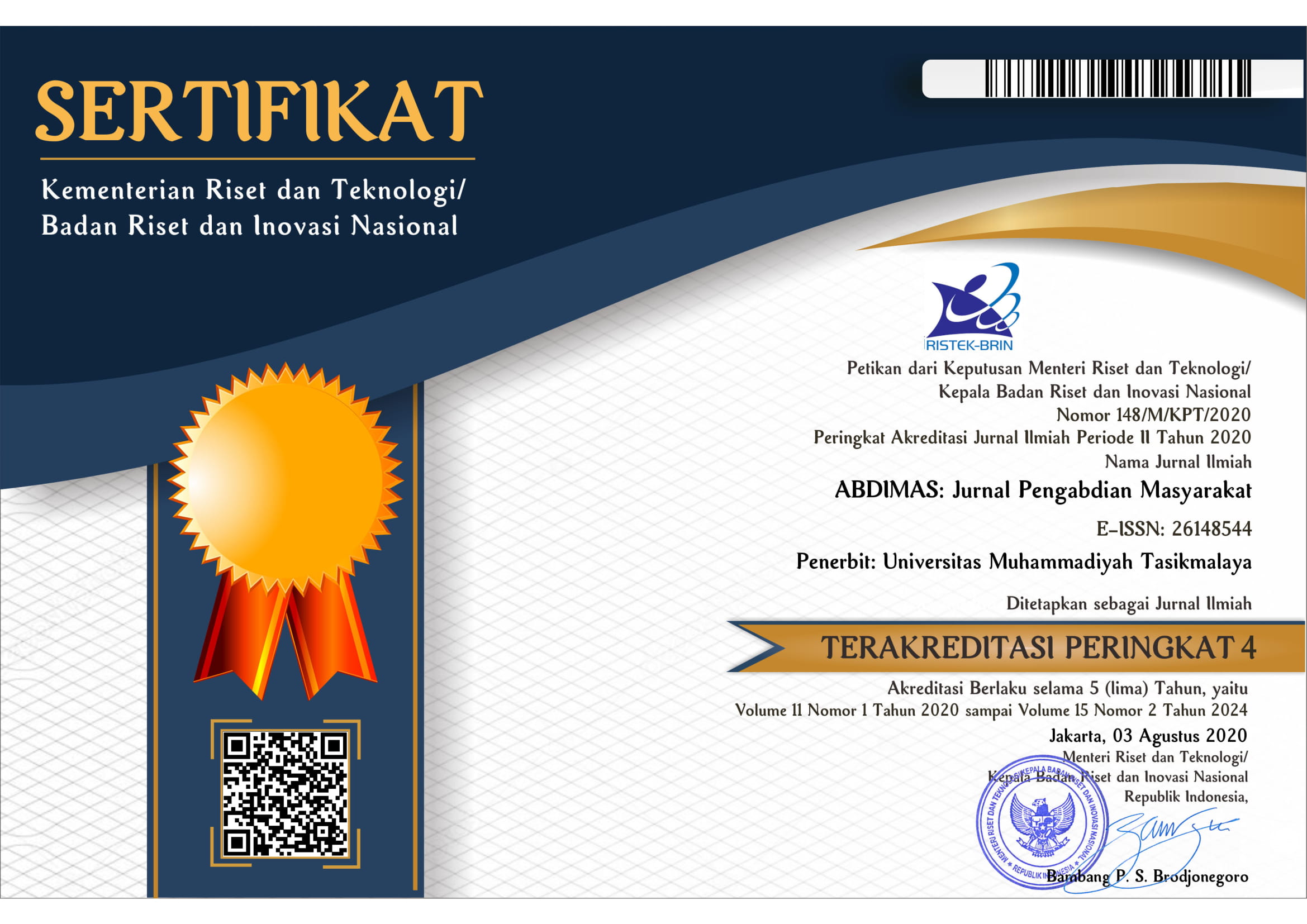Correlation between Knowledge and Attitudes with COVID-19 Prevention Behavior in High School Students in Surabaya Raya, East Java, Indonesia
DOI:
https://doi.org/10.35568/abdimas.v6i2.3330Keywords:
Meosbekwan island, Fiberglass Vessel, Fiberglass Polymer Composite MaterialAbstract
The SARS-CoV-2 virus that causes COVID-19 continues to mutate, with some forming new, relatively more dangerous variants. Surabaya Raya including Surabaya, Sidoarjo, and Gresik is the most affected areas by the COVID-19 pandemic, especially in East Java Province. One of the reasons for the increase in COVID-19 cases is due to inappropriate COVID-19 prevention behavior. Knowledge and attitudes are important factors that can influence a person's behavior. This study aims to analyze the relationship between knowledge and attitudes toward COVID-19 prevention behavior in high school students. This type of research used analytic observational with a cross-sectional design. The subjects in this study were 176 students from SMA 4 Muhammadiyah Surabaya, SMA Negeri 1 Sidoarjo, and MA Mamba'ul Hisan Gresik who had filled in the questionnaire. The dependent variable in this study is COVID-19 prevention behavior. The independent variables in this study included gender, history of being infected with COVID-19, knowledge, and attitudes. Data were analyzed using the chi-square test. The variables studied that are related to COVID-19 prevention behavior in high school students are knowledge (p = 0.027; PR = 0.48) and attitudes (p = 0.000; PR = 6.83). The variables studied that did not have a relationship were gender (p = 0.537) and a history of being infected with COVID-19 (p = 0.974). Knowledge and attitudes are significantly related to COVID-19 prevention behavior, but not to gender and history of COVID-19 disease. Community service is one of the important efforts in improving the knowledge, attitudes, and behavior of high school students.
Keywords: COVID-19, Knowledge, Attitude, Behavior.
Downloads
References
Jocom, H., Sunantri, Y., Herlina, D., Aditya, P. M., Sri, H. L., Desifirsta, S. M., Monalisa, S. S. 2022. Making Variety of Processed Gonggong Snails Become Culinary Alternatives in Bintan Island for The Community of Tanjung Talok, Teluk Sasah Village. Abdimas Umtas: Jurnal Pengabdian Kepada Masyarakat, 5(1), 1463-1473.
Widayatun, Antariksa, I. G. P., and Romdiati, H. 2002. Data Dasar Aspek Sosial Terumbu Karang Indonesia, Jakarta: COREMAP, 2002.
Farid dan Sryadi. 2001. Laporan Umum Hasil Penelitian RAP di Kepulauan Raja Ampat, Sorong, Irian Jaya, Jayapura: Conservation Internatioanl Indonesia Program Irian Jaya, 2001.
R. Ruzuqi. (2020). Impact Strength Analysis of Polymer Composite Materials (PCM) Fiber Reinforced in the Fiberboat Application. Mat. Sci. Res. India, 17(2), 170–178.
P. Pardi and A. Afriantoni. (2017). Fabrikasi Kapal Fiberglass Sebagai Bahan Alternatif Pengganti Kapal Kayu Untuk Meningkatkan Produktifitas Nelayan Di Perairan Bengkalis. KPL, 14(2), 53.
W. Mustafa, S. Asri, F. F. L., M. R. Firmansyah, M. Z. M. Alie, and F. Husain. (2018). Pelatihan Perbaikan Perahu Kecil Fiberglass Reinforced Plastic (FRP) Untuk Budidaya Rumput Laut di Kabupaten Bantaeng. JT, 1(1), 87–98.
Anwar K. 2012. Analisis Produksi Kapal Perikanan Berbahan Dasar Kayu dan Fiberglass IPB. Bogor, 2012.
R.-M. Wang, S.-R. Zheng, and Y.-P. Zheng. (2011). Polymer matrix composites and technology. Woodhead Publishing Limited.
A. K. Kaw. 2006. Mechanics of composite materials, 2nd ed. Boca Raton, FL: Taylor & Francis, 2006.
Anmarkrud, T. “Fishing Boat Construction: 4, Building an Undecked Fibreglass Reinforced Plastic Boat”, FAO, Rome, Italy, 2009.
McVeagh, J., Anmarkrud, T., Gulbrandsen, O., Ravikumar, R., Danielsson, P., and Gudmundsson, A. 2010. Training Manual on The Construction of FRP Beach Landing Boats. FAO, Rome, Italy, 2010.
R. Ruzuqi. (2020). Tensile Strength Analysis of Polymer Composite Materials Fiber Reinforced in The Fiber boat Application, Journal of Research and Opinion, 7(8), 2763–2769.














